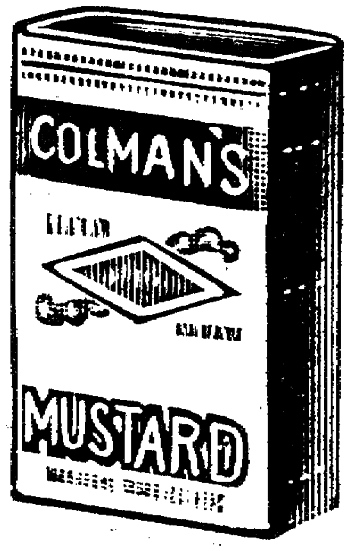Jane Grigson’s potted cheese.
Jane Grigson’s potted cheese. Potting is one of the oldest English means of preserving food, and one of the best tasting. Grated, minced or pounded protein would be enthusiastically seasoned and set in a base of butter in proportions that vary widely by cook and over time. The butter would have been clarified for the purpose of preservation because the solids suspended in butter spoil faster than the medium itself. A crust of clarified butter would seal the top of the pot to keep more bacteria at bay, and then the pot could last a while. In our refrigerated age, the clarification and seal are no longer necessities, and food processors take the ache out of obliterating your food for the pot, so potting has gotten easy and nobody has any excuse not to revive the ancient art.
 - ½ lb shredded Cheddar, Cheshire, Lancashire or other hard cheese
- ½ lb shredded Cheddar, Cheshire, Lancashire or other hard cheese
- 6 Tablespoons unsalted butter at room temperature
- about 2 generous Tablespoons Verdelho Madeira, tawny Port or Amontillado Sherry
- about ¼ teaspoon cayenne
- scant ¼ teaspoon mace, more or less (optional)
- ½ teaspoon dry or prepared mustard
- a splash of Worcestershire
- melted clarified butter (optional)
- Drop the cheese and butter into the food processor and blast them to paste.
- Dump the cayenne, wine of choice and Worcestershire into the cheese mixture and blast it again until everything marries. Spoon the cheese into pots and, if you go in for either longer preservation, authenticity or both, pour over the clarified butter to set.
Notes:
-While our recipe gives unabashed credit to the great Jane Grigson, it does differ from hers in some respects. She omits the mace, mustard and Worcestershire, probably out preference, because in English Food she acknowledges that both are traditional additives. The choices are yours. Nor does Mrs. Grigson mention Madeira, a fortified cousin to Port and Sherry relished by the Editor. Rainwater is cheaper, easier to find and less complex than Verdelho; it is a blend rather than the press of grapes from a single solera, and entirely useful for potted cheese.
-For mustard, Colman’s, both dry and ‘made,’ is an excellent standby; Dijon is milder and suitable too.
-Vinegar itself, a component of many prepared mustards, can enliven potted cheese. Use common sense; Sherry vinegar if you moisten the pot with Sherry, for example, or red wine with Port. Be sparing though.
-Potting can be frugal. Gather up your ends and stubs of cheese, grate them up and pot them. Random combinations promote serendipity, as Mrs. Grigson understood. We admire her work so quote her at length:
“Now that I serve so much more cheese to show off what our cheesemakers can do, I often have bits and pieces left over. I make the most outrageous mixtures, cutting them up and reducing them to crumbs in the processor, then adding the butter, some Amontillado sherry and plenty of coarsely ground black pepper [which, however, is absent from her basic recipe]. A bit of Lanark and Dunsyre, a lot of Single Gloucester and a few cubes of Cheddar, for instance, produce a far more rewarding result than any cook deserves. The thing is to keep tasting, then add alcohol and seasonings accordingly.” (Jane Grigson’s English Food, London 1974, 33)
If, however, you live in the United States and can find a wedge of Lanark or Dunsyre, you would be a fool to leave a crumb on the board.
-Don’t you wish that you wrote like Mrs. Grigson? The Editor does.
-Port pairs particularly well with blue cheeses, in a pot as well as by the board. Mrs. Grigson gives us good advise to add chives to the more pungent and saltier blues like Gorgonzola or Shropshire; a yolk of egg along with or instead of the Port can help to soften the firmer blues too.
-For our admittedly unconventional money, beer is better with the bigger blues, and we do use it instead of Port to pot our blues a lot of the time. Bitter ale or IPA is best.
-Fromage fort, ‘strong cheese,’ is a close cousin to the potted variety. It, like potted cheese, can be frugal fare; the basic difference is white wine and garlic. For each pound of shredded cheese scraps, you will want 3 Tablespoons of unsalted butter, 2 ounces of white wine, about 2 Tablespoons of chopped parsley, that clove of garlic, smashed and minced, and the food processor. Dump everything into the processor and rip it until smooth.
-The American south has spawned its own variation, and it is the equal of its ancestor. In common with potted cheese, recipes for pimiento cheese proliferate, and every serious southern cook hews to a ‘secret’ formula. Pimiento cheese could have been invented to eat with Bourbon, pairs well with Sherry and sings with a beer. This single recipe must suffice for now. Mix together half a pound of sharp Cheddar, a little jar of ‘Dromedary’ pimientos that you have drained and chopped into tiny dice, a good splash of hot sauce, a teaspoon of prepared mustard, pepper, some Worcestershire, about half a teaspoon of olive juice and enough mayonnaise to bind things together without cloying. The pimiento cheese is better if you chill it for a few hours.

